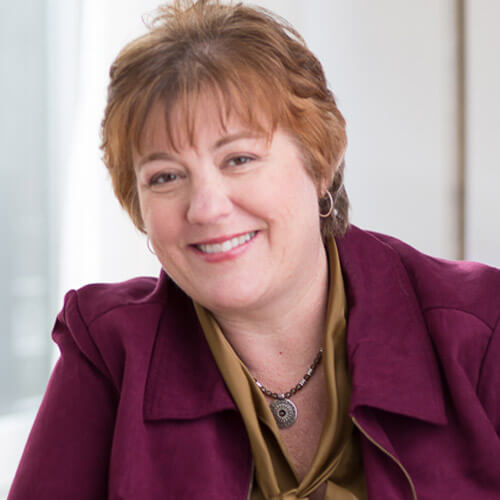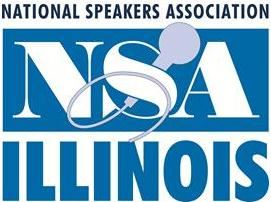How To Price Speaking Proposals
Share this post:
Recently, I spoke with Laurie Guest about how to price speaking proposals. She’s been a professional speaker for 24 years. For the first decade, she was approaching pricing like most speakers do: Try to figure out what your price is by comparing yourself to everybody else, find somebody to hire you, often negotiate to a lower fee, and then go speak. Using that formula, she priced herself based on what she thought other people at her level were being paid.
But she eventually realized that the approach had some flaws. It’s not the best way to close deals. It’s not the best way to continue raising your fees, and it’s not the best way to find the “gap dollars” that every client has. (We’ll explain what those are in a minute.)
Laurie realized that there must be a smarter way to run a speaking business, so she sought to create one. Over the past 14 years, she’s changed the way that she approaches pricing and proposal writing. It’s been a game-changer for her. She calls her method “Sweet Spot Pricing.” If you’re looking for advice on how to price speaking proposals, Laurie’s method can be a game-changer.
Here’s the problem with traditional pricing models: If you only respond to a speaking request with a flat price, the odds of you saying the exact number that that client wants to pay is slim. So, one of two things can happen. You either overprice yourself and lose the job, or you underprice yourself and leave money on the table. What can you do instead?
“Sweet Spot” Is Key If You Want to Know How to Price Speaking Proposals
Laurie now creates proposals that contain three-tiered pricing — a basic, deluxe, and premium package. The middle one, the deluxe, is the sweet spot. That’s what she’s going for. It creates a win-win situation. It’s the amount of work that the client wants from her, and it’s the amount of money that she wants to be paid. That number is not always the same, of course. It changes according to the particulars for the booking, such as is she driving or flying and how far, how long she’ll need to stay, and how much customization of content is involved. When I spoke with Laurie, she was going to a speaking engagement 30 minutes from her home, and the next day she was flying out of state for a speaking engagement that required an overnight stay. Those gigs weren’t priced the same.
After creating the deluxe package Laurie starts to design the basic package, where everything is a little “less than.” The basic package is less work than the client wants from you, it’s less money than you want to be paid, and its less time than the client really wants you for. For example, instead of a half-day, you might offer a two-hour program. Laurie spells out the specifics in just two or three bullets. If you’re wondering how to price speaking proposals, there are two key things to consider when creating this basic package:
- The price cannot be a number that makes you mad to leave your house for.
- The package needs to have a deterrent in it, a reason that the client won’t want it. For example: The content is industry specific but not customized.
When the client can’t afford the deluxe package, the basic package becomes their compromise yet at an acceptable agreement for all involved. Many speakers already do this when they negotiate a deal, the difference is the speaker doesn’t just budge on price, the client has a sacrifice as well making the next higher package look more desirable.
Now it’s time to look at the premium package where everything is “more than.” It’s more work than the client wants from you and way more money than they want to pay. For example, it could be a keynote followed by a breakout session the same day or the next day, a copy of your book for everyone in the room, and access to your online course if you have one. It’s all about add, add, add. There are seven to nine bullets in this package. If you’re curious about how to price speaking proposals, here’s a tip: When you do this step correctly, the client won’t even consider the premium package because it’s outside their budget range.
Why would you do that? Because it makes the deluxe package, the sweet spot, look really desirable.
As much as Sweet Spot Pricing is about the features and benefits, it’s also about setting the right price. Let’s say that your normal keynote fee is $4,000. You don’t want the packages to be priced in even increments — $2,000, $4,000, and $6,000. Instead, you want to make the gap narrower between basic and deluxe and wider between deluxe and premium packages. In this case, it could be priced $2,000, $4,000, and $8,000. Here’s how the pricing psychology works. You don’t want them to pick the basic package, so you’re giving them so much more for just a little bit of money with the deluxe package. Remember those “gap dollars” we mentioned earlier? This is where they come into play. The client thinks, “We get so much more value, of course we can find $2,000 more …” They can justify the extra money because they’re getting extras, such a customization or a few books they can give away to attendees.
The premium, on the other hand, is such a jump in price because it’s more work than they may even need, which pushes them back to the deluxe package. Consumers are wired to buy this way. Think about when you last bought a new ca, an appliance, or a vacation. Did you pick the middle level option? Odds are you did. Consumers often pick the middle option even if they don’t realize that they’re already conditioned to do so.
When the client comes back and says, “We’d love the premium package, but we’re going to go with the deluxe,” it’s time to celebrate as a speaker.
That’s when you ask, “Is there something in the premium package that you really hoped you could get?” When they tell you what it is, you say, “OK, we can move that item from the premium package and put it into the deluxe package and make it $6,500.” This is another way to uncover more gap money that you wouldn’t have found if you had just listed a flat rate for a keynote speech.
If you’re an established speaker and you’re exploring how to price speaking proposals and how to increase your fees, then Sweet Spot Pricing might be for you!
BONUS FOR YOU!
Laurie offers a vault of FREE, helpful information speakers can use to grow their careers and build their business at www.UnlockTheGoodies.com. Use the password NSA. It includes “93 Ways to Get Booked and Get Paid,” a video that goes over the information explained in this blog post, and “100+ Options for Your Sweet Spot Pricing Packages.” If you’re like more information about how to price speaking proposals, please check out Laurie’s resources. You may also be interested in How to Build a Professional Speaking Business.

Guest Writer
An entrepreneur, keynote speaker and author, Laurie Guest became known as a “go-to-resource” for customer service excellence during a successful career in the healthcare industry. In 1997, she channeled that expertise into Guest Enterprises, Inc., her own speaking and training company designed to inspire stellar customer service and help others create noteworthy guest experiences. She has is a 20+ year member of NSA (and NSA-IL) and spoke on the mainstage in 2015 on the topic of pricing strategy. She was the chair of Speaker Magazine in 2019 and most recently co-chaired Winter Conference 2020 on the topic of sales.
Laurie is an award-winning columnist and the author of two books. With her latest, The 10¢ Decision: How Small Change Pays of Big. She lives in DeKalb, Illinois where she is a wife, mother of two, lover of board games and below-average cook.






